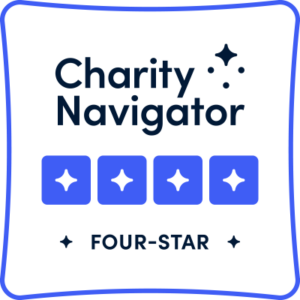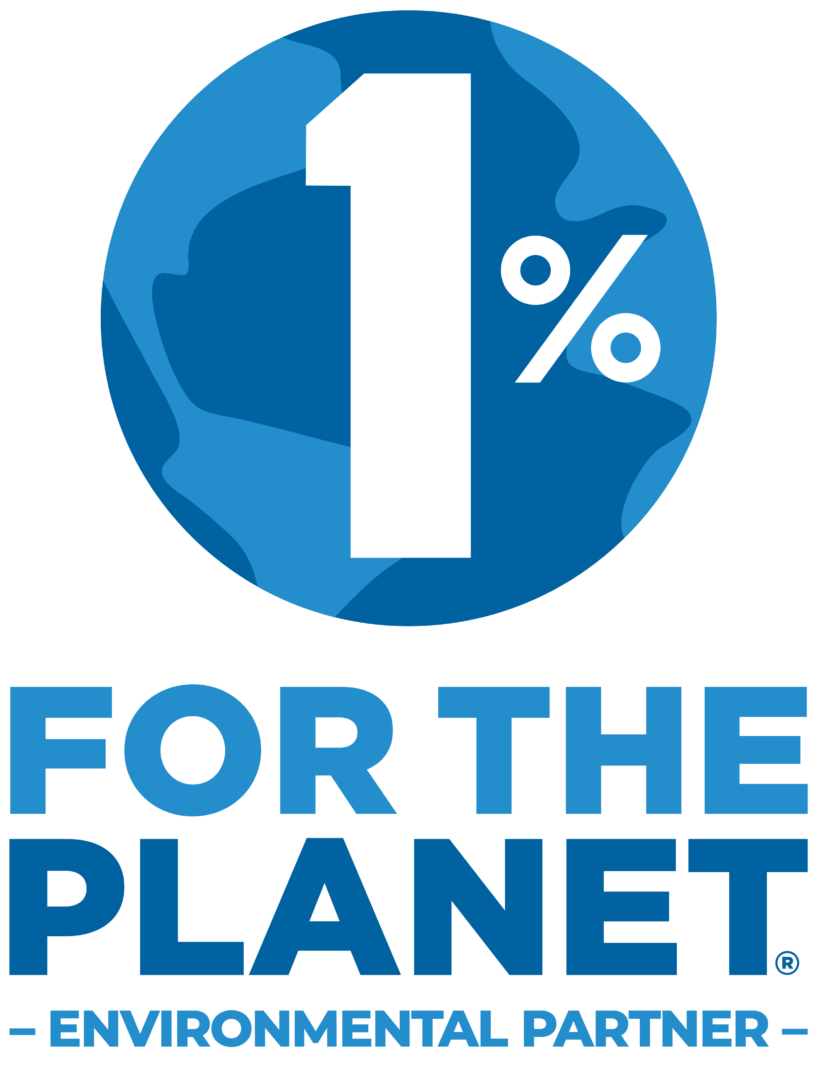The following is a session transcript of a conversation hosted as part of our Online Global Conference originally aired on Monday, October 4, 2021. We did a deep dive into our work over the past three years and what we discovered will surprise (and encourage) you! What’s working? What are we improving? See our “report card” and learn how your partnership with Plant With Purpose is changing the world. You’ll also learn about why we believe our signature Watershed Model is the best way to turn a deforested and degraded region into a healthy, life-giving ecosystem (video premiere!)
Host: Lynne Marian, Marketing & Communications Director
Presenters: Corey Chin, Monitoring & Evaluation Manager | Corbyn Small, Development Director
(Lynne Marian): Welcome to The Change Is Real: Measuring Results & Impact
Plant with Purpose empowers rural communities to escape poverty by reversing environmental damage, deforestation, and restoring life-giving ecosystems. This work has never been more critical as climate change makes life increasingly difficult for the approximately one billion people in poverty (85 percent of whom live in rural areas).
These individuals rely almost exclusively on small farms to support their families -- steep, rocky land that you and I would hardly call a farm.. Yet, though circumstances are desperate, there is also great reason for hope. That's what we want to bring you here today. We have just completed our triennial study measuring the effectiveness of Plant with Purpose work around the world and we have some exciting results to share with you. My name is Lynne Marian. I'm the director of marketing and communications here at Plant With Purpose.
I'd like to introduce our two presenters. Corey Chin, our monitoring and evaluation manager. We also have Corbyn Small, our development director, who will be joining us on ZOOM from Colorado. Corey, I'd like to start by asking you why and how do we measure impact?
(Corey Chin): The reason that we're so interested in measuring the impact of our work is because we know that activities alone do not guarantee impact. For example, we conduct workshops to promote regenerative agricultural practices. However, that doesn't necessarily mean that farmers will then go and apply those techniques. So, it's important for us to periodically go out and measure what's actually happening. Create a report card of the overall efforts. We did a deep dive into our work over the past three years and what we discovered will surprise (and encourage) you! What’s working? The driving force behind our impact measurement has always been to ensure that we're really having the intended impact and also to optimize use of our resources.
While we want to know if we're having a positive impact… We also want to know where we can improve by closely relating our impact measurement to the theory of change, which guides our programing. Through this, we’re able to see clear linkages between impacts and the activities that led to those impacts.
If an impact result is underwhelming in our report card, we can identify where things went wrong. Structuring it in this way is what makes all of the data we collect actionable. When you look at our theory of change, you can see activities which lead to outputs which are easily measured and quantifiable. Those then lead to outcomes, which are short term results measured annually in order to guide programing and make proactive course corrections. These then lead to impact, which leads to the goal of holistic transformation. Last year, we conducted our triennial impact evaluation across eight countries and 4,000 households, and we've recently published the results in our impact report. We're seeing exciting results, and we're seeing families grow out of poverty. All while transforming the landscape around them to the degree that we can actually see measurable change in tree cover and vegetation from satellite imagery.
(Corbyn Small): Thanks, Corey, for sharing that. Before I move on to focusing on the “where” of the work that we're doing, I just want to stop and point out how grateful I am to the programs, the technical team of Plant With Purpose, because you have been investing in measuring impact for 15 years.
I've been at Plant With Purpose for 13 years, and this work was in process before I even came. What's unique and stands out to me, is that this conversation is incredibly important and relevant today. Donors are increasingly interested in knowing about the impact of the support that they're giving to organizations. So, you're hearing a lot of organizations who are talking about measuring impact, and what you said I just love. You said the driving force has always been to ensure that we are really having the intended impact, and to optimize the use of our resources. It is not driven by us, marketing and communications and fundraising to have the best thing that we can say. The critical piece is that Plant With Purpose has sought to measure impact because it allows us to know what's working and what's not working, and how we can better serve in the communities we work.
Thanks, Corey. I really appreciate you all. Thanks Lynne for the introduction. I want to focus on the “where” for a moment, and not just the country level, but actually something more specific. Yes, we work in East Africa, Democratic Republic of Congo, Ethiopia, Tanzania, Burundi, Southeast Asia, Thailand, the Caribbean, Latin America, Mexico, Haiti and The Dominican Republic. Those are the countries that we work in. But, what I want to talk to you about is actually Plant with Purpose’s signature watershed model.
This is an incredible development that's taking place, especially over the last five years. But it's been in development for the last 10. I want to introduce the video to talk a little bit more about that.
*Watershed Video was shown*
(Lynne): Wow! The watershed model seems like a real game changer. Corbyn, what is the real power of the watershed model? Is it the impact on people or the environment?
(Corbyn Small): Actually, it's both. Hands down, it is both. As a community development organization, it is logical to focus your efforts in a geographic area for the social solidarity benefits that you'll see. For example, if you want to see behavioral change, then you're not just going to work with one person in one area as an environmental organization working with people. There's also incredible ecosystem solidarity to be gained by defining your scope of work within a watershed. To put it another way, if you're trying to affect landscape change, then it makes the most sense to use an environmental delineation, and that is a watershed.
The watershed model takes the successes and lessons learned by Plant With Purpose over 35 years, and it centers it geographically to maximize the environmental and social impact in the most sustainable way. In 2017, after a two year pilot, we really gained incredible data showing that the watershed hypothesis was actually working.
In the Democratic Republic of Congo (one of the hardest places that you could possibly choose to work as a nonprofit organization), we formally implemented the watershed model from scratch. What we saw after two years was a 60 percent reduction in poverty levels among participants and among non-participants. The watershed model has become the signature design for our programs at Plant With Purpose. It reduces costs and improves scalability, allowing for us to reach more people and restore more land.
(Lynne): Well, that's great, Corbyn. So Corey, as Corbyn was saying, the bottom line of the watershed model is reducing poverty, yet poverty is complex. What does poverty alleviation look like in the context of our work?
(Corey): Because our program is holistic and multidimensional, we measure our impact in alleviating poverty by using a multidimensional poverty index, or MPI. MPI is based on 12 indicators of conditions of poverty. It covers land, housing, food, time, opportunity, farming and financial stability. MPI combines the level of poverty within each household (poverty intensity) with the prevalence of poverty- or number of households in poverty. This allows us to look at poverty comprehensively, to assess whether or not significant and lasting change is taking place in our watersheds.
Our most recent report card of impact data shows that Plant With Purpose families experienced a 55 percent reduction in poverty. This means that they're eating more meals. They're eating more nutritious meals. They're saving more money, they have more diverse farms and income, and are more resilient to environmental and economic shocks like we saw over the last year and a half.
(Lynne): Wow! That's great, thanks. So Corbyn, Plant With Purpose has three areas of intervention. Tell us what the research is telling us about how those areas are working.
(Corbyn): Absolutely! By way of transition, I actually want to share a little bit of the founding story of Plant With Purpose that identifies some of the challenges that Plant With Purpose seeks to address. In 1979, “Hurricane David” strikes the Dominican Republic head on, and is a category 4 hurricane that absolutely devastates the islands and is all across the news in the United States. There was incredible devastation impacting families in poverty. The founder of Plant With Purpose, Tom Woodard, and some folks from his church decided to go to the Dominican Republic to try and meet some of the needs they were seeing on TV.
They started in Santa Domingo in the slums and worked with individuals distributing food aid. As they spent time with those individuals in the communities, they started asking: What is it that you do? What is your vocation? Overwhelmingly, people responded that they were farmers.
It posed this question, “If you're a farmer, why are you in an urban slum where there is no land to farm?” It pointed to the connection for what would become the mission and vision of Plant With Purpose -- the connection between the environment and poverty. We looked upstream, literally and figuratively, to see the poverty that was being experienced in the rural countryside in the Dominican Republic due to poor crop yields and environmental damage. It was driving people to leave that land and move into the slums of Santo Domingo.
Economic
This economic poverty, included lack of access to financial tools and services, and predatory lending (where people are being forced to take loans for 100 to 300 percent interest rates-absolutely astronomical).
Environmental
Families were seeing this decreased income from farming, driving further environmental degradation - both decreasing farm yields and increasing pressure on forests. This vicious cycle as farmers try to provide for their families, saw their land degrade and then cut more forests down to farm more land.
Spiritual
But the impacts on our report card are not only economic and environmental but spiritual. Rural subsistence level farmers are some of the most overlooked and underestimated groups of people in the world. Imagine if you worked seven days a week with all of your toil and all of your effort and the global economy said your work is worth a dollar a day. It's easy to lose hope with that kind of a message being told to you. Even the government defines you as a mere saying peasant farmer.
Even non-Christian development funders and practitioners acknowledge the importance of spiritual beliefs and understandings in communities.
As Jayakumar (Jiya-Kumar) Christian and other authors have observed, poverty is about far more than a lack of material possessions. At its core, poverty is about relationships that are broken.. This includes the relationship between God and human beings, between humans and nature, between humans and their neighbors, and even our relationship with ourselves.
Restoring these relationships is a part of our work in reversing poverty and restoring the environment.
Plant With Purpose seeks to transition these rural communities that are experiencing poverty from a space of powerlessness and into one of agency and hope for the future. The activities that Plant With Purpose does in the area of spiritual renewal are: to partner with local church networks and train leaders and participants on a variety of topics including peace and reconciliation, theology of work, creation, care, charif creation and then having local staff who build incredible relationships over time in communities. Focusing on listening and valuing local knowledge.
Our most recent report card, an impact evaluation, shows that partnering farmers are more likely to believe that their community works together to solve problems, that their work is a good use of their talents, and that they have the ability to improve their lives. They feel pride in the work that they do. We also see that participants are serving their neighbors at a higher rate than non participants. Through all of this, I think that the key thing is that our staff truly believe that every single person that we partner with is made in the image of God. They have unique talents and skills to offer. That belief is fundamental and builds trusting relationships to bring lasting change.
The impact we're seeing in environmental restoration is really encouraging. Through our Seeds of Change agricultural curriculum, our participants are promoting crop diversification, regenerative practices that benefit soil, air and water, while at the same time increasing the farmer yields.
We're seeing results in our impact evaluation that show that partnering farmers have 40 percent more crop diversity, 25 percent more income diversity, and are applying 89 percent more sustainable techniques. These changes are benefiting farmers by providing them with more income, more resilient livelihoods, better nutrition, and improving the natural environment around them. Partnering farmers are also planting millions of trees every year. The most exciting thing about this part of the report card is that we aren't paying people to plant trees. They're doing it because they know that it will benefit them, their families, and their watershed.
This is the only method of tree planting that is truly scalable and sustainable for us which the data in our report card demonstrates. Partnering farmers planted over 6 million trees this past year alone. These trees are combating climate change by sequestering carbon and improving the environment by not only reducing deforestation, but actually resulting in reforestation of watersheds. This is because our participants are planting 4.3 times as many trees as non participants. We’re able to see a measurable difference in the changing of vegetation each year in the watersheds where we're working, compared to two neighboring watersheds where we're not yet working. So this is a great example on our report card of how the activity, which is tree planting, is, in fact leading to the intended impact: to increase tree cover and vegetation in the watersheds. We've seen this in our most recent impact evaluation data
Plant With Purpose's main platform for economic empowerment are called Purpose Groups. Those are built around the model called Village Savings and Loan Associations, which are essentially savings-led microfinance groups. These groups provide a forum for saving, borrowing, gaining financial literacy, working together as a community to solve problems, and take on environmental initiatives
This is the platform that Plant With Purpose does all of its work through. The outcomes and the impact that we're seeing in our report card is that partners who have participated for three or more years in a purpose group are twice as likely to be saving cash as non-participants. 95 percent versus 48 percent. Partners have two and a half times as much savings and reserves approximately, two and a half months worth of savings. And with our Plant With Purpose partners, sources of income are 18 percent more diverse.
Income diversity is a key pillar for withstanding economic and environmental shocks. Right now, at this moment, there is 7.4 million dollars US equivalent in equity that is saved by fifty four thousand partnering families, and they're earning 19 percent return on their savings. Of that 7.4 million, five million is lent out in loans to those community members for education, health care, business, regenerative agriculture, and tree planting. It is truly remarkable to see the impact that purpose groups are having in communities.
If you're not familiar, please learn more on our website. These groups are enabling banking at the community level, and they are truly repelling the predatory lenders that once thrived in these communities. Combining all of these impacts, spiritual renewal, environmental restoration and economic empowerment. As Corey mentioned, Plant With Purpose measured a fifty five percent reduction in poverty among the average participant who Plant With Purpose has worked with for three or more years. Today, we're working with 54,000 farming families, impacting more than 300 thousand moms, dads and kids.
(Lynne): Wow, Corbyn, thank you so much. Corey, thank you. These were amazing insights and I am encouraged. I hope you are, too. As was mentioned, we are pleased to have just completed our triennial impact study. The results were released in a report that many of you as Plant With Purpose supporters may have already received.
But, if you haven't seen the report and you'd like to view a PDF visit plantwithpurpose.org/impact. Click on the "View our Impact Report" link! The needs are urgent. Our report card validates that the approach works. It's time to grow.
Over the next four years, Plant With Purpose will partner with an additional 100 thousand families, which will bring our total reach to almost a million people across 10 countries. We cannot do this without you. Thank you for being part of the solution together. Let's do even more.
















